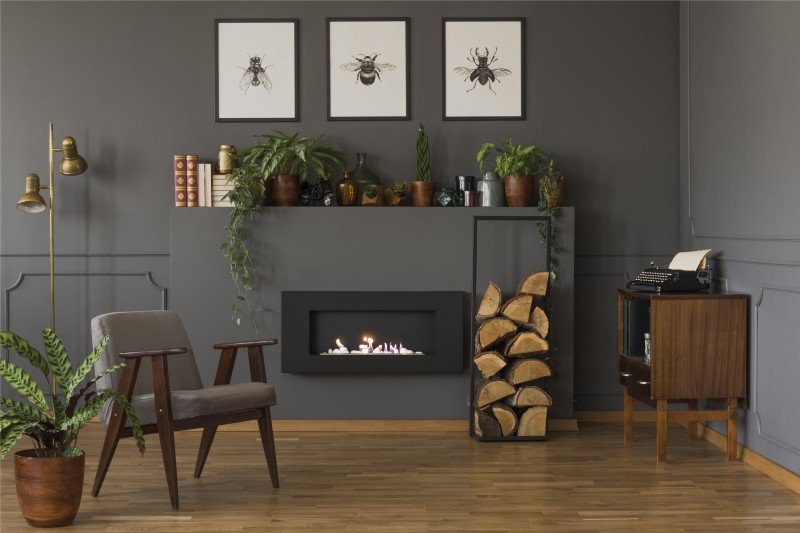The Reasons Fireplace Has Become Everyone's Obsession In 2024

The Fireplace: A Warm Embrace of Tradition and Comfort
Fireplaces have actually been an integral part of human habitation for centuries, serving as a source of warmth, an event location, and a symbol of convenience. While the modern versions might vary remarkably from their ancient ancestors, the appeal of a fireplace endures. This post checks out the various aspects of fireplaces, including their history, function, types, and upkeep, while also attending to often asked questions.
The Evolution of Fireplaces
Fireplaces go back to prehistoric times when open flames were utilized for cooking, heating, and security from wildlife. Over the centuries, fireplaces developed from simple fire pits to the advanced renditions we see today. Here is a brief timeline of their evolution:
- Prehistoric Era: Cavemen used open flames for heat and cooking. Wind and smoke often blew into residences.
- Middle Ages: Stone and brick fireplaces ended up being common in homes and castles, including chimneys to bring smoke outside.
- Renaissance: Elaborately developed mantels emerged, and fireplaces ended up being centers of social interaction.
- Industrial Revolution: Innovations in heating materials led to a variety of designs and performances.
- Modern Era: The arrival of natural gas, electric, and bioethanol fireplaces supplied cleaner alternatives to traditional wood-burning systems.
Table 1: The Evolution of Fireplaces
| Era | Qualities |
|---|---|
| Prehistoric Era | Open flames for warmth and cooking |
| Middle Ages | Stone and brick structures with early chimneys |
| Renaissance | Elaborate mantels, social centers |
| Industrial Revolution | Diverse designs, development of new materials |
| Modern Era | Gas, electric, and bioethanol options |
The Purpose of a Fireplace
Fireplaces serve double purposes: they provide physical heat and create an emotional environment. House owners often collect around the fireplace to bond, share stories, and take pleasure in a cozy setting. The radiance of a fire can be relaxing, adding to a sense of relaxation and intimacy. Beyond individual satisfaction, fireplaces also offer functional benefits, consisting of:
- Home Heating: Effective heat source, particularly in cooler climates.
- Increased Home Value: A properly designed fireplace can improve the visual value of a home.
- Emergency Heating: In case of power failures, wood-burning fireplaces can act as an essential heat source.
- Visual Appeal: A focal point that contributes to interior decoration.
Kinds of Fireplaces
Today, fireplaces come in different styles and fuel types, accommodating a varied series of preferences and settings. Here are some typical types:
Wood-Burning Fireplaces:
- Traditional fire pits
- Traditional masonry fireplaces
- Need significant maintenance and chimney maintenance
Gas Fireplaces:
- Available in both direct vent and ventless ranges
- Much easier to utilize and keep than wood-burning fireplaces
- Supply instantaneous heat with a flick of a switch
Electric Fireplaces:
- Offer associated heat sources without real flames
- Frequently designed to imitate traditional fireplaces
- Suitable for smaller spaces and homes without a chimney
Bioethanol Fireplaces:
- Use bioethanol fuel, supplying a sustainable alternative
- Require no ventilation and can be positioned anyw here
- Safe and simple to maintain
Table 2: Types of Fireplaces
| Type | Fuel Source | Features | Maintenance Requirements |
|---|---|---|---|
| Wood-Burning | Wood | High atmosphere, heat source | Routine chimney cleansing |
| Gas | Natural gas or gas | Instant heat | Minimal, periodic maintenance |
| Electric | Electrical power | Easy setup | Really low maintenance |
| Bioethanol | Bioethanol fuel | Ventless, portable | Low, primarily cleaning up |
Upkeep and Safety Considerations
Owning a fireplace includes specific responsibilities, specifically regarding its safe operation and long-term maintenance. Here are very important upkeep suggestions and security standards:
Maintenance Tips:
- Annual Inspection: Always have your chimney and fireplace examined a minimum of when a year by a certified specialist.
- Routine Cleaning: Clean out ashes and particles after each usage, and guarantee the flue is open before starting a fire.
- Look for Cracks: Inspect masonry for cracks or damage to prevent structural issues.
- Use Proper Fuel: Only usage dry, seasoned wood for wood-burning fireplaces; do not burn treated wood.
Security Guidelines:
- Install Smoke Detectors: Ensure smoke detectors are practical, evaluating them monthly and changing batteries as required.
- Keep a Fire Extinguisher: Have one neighboring, even if a fireplace is used infrequently.
- Monitor Flames: Never leave a fire unattended, and ensure kids and animals are kept track of around the fireplace.
Frequently Asked Questions (FAQs)
1. How can Buy Fireplace Online minimize smoke from a wood-burning fireplace?
To reduce smoke, usage dry, seasoned wood, and ensure that your chimney is tidy and unobstructed.
2. Is it safe to utilize gas fireplaces during a gas leakage?
Never use a gas fireplace during a gas leak. Immediately leave the location and contact gas services for assistance.
3. Can I install an electric fireplace myself?
Electric fireplaces are generally easy to install, but it is recommended to seek advice from experts to make sure security and compliance with regional building codes.
4. What is see it here of fireplace for small spaces?
Electric fireplaces or bioethanol models are often best for small spaces, as they do not need extensive ventilation or structural modifications.
Fireplaces have actually transcended their initial function of offering heat to become treasured components of home style and household life. They stimulate memories of heat, celebrations, and togetherness while providing functional benefits that enhance modern living. By understanding the different types of fireplaces, their maintenance, and safety practices, homeowners can delight in the ageless appeal of this cherished feature for generations to come.

